 W
WACE was a multi-format computer and video game magazine first published in the United Kingdom by Future Publishing and later acquired by EMAP.
 W
WAmiga Force was a video games magazine launched towards the end of 1992 by Europress Impact. It lasted for 16 issues before going down with its publishers. The first issue of Amiga Force went on sale around September 1992. The magazine would switch to monthly release soon after. Amiga Force showed many similarities to other Europress Impact titles, particularly Sega Force. Unlike rival magazine Amiga Power, Amiga Force decided not to include any coverdisks on the issues.
 W
WBig K was a short-lived multi format magazine published by IPC Magazines Ltd during the 1980s. The design of the magazine was very similar in style to their comic strip publications at the time, 2000ad and Roy of the Rovers and seemed to be aimed squarely at the younger computer user.
 W
WComptiq is a Japanese computer game magazine, first published in 1983, by Kadokawa Shoten. The name "Comptiq" came from combining the words "computer" and "boutique". Originally a PC magazine, its focus shifted from computers to computer games. As of September 2003, it was known as a "MediaMix Game Magazine". The magazine is sold every month on the tenth.
 W
WComputer Gamer was a video game magazine published in the United Kingdom by Argus Specialist Publications, covering home gaming from April 1985 to June 1987. It was a colourful relaunch of the failing magazine Games Computing, a more conservative magazine published throughout in monochrome.
 W
WDengeki Maoh is a Japanese seinen magazine published by ASCII Media Works. It first went on sale on October 27, 2005 and is sold every month on the twenty-seventh. The magazine features information on video games, manga, and light novels. A special edition version of the magazine called Dengeki Black Maoh was published quarterly from September 2007 to June 2010.
 W
WElectronic Fun with Computers & Games was a video game magazine published in the United States which was published from November 1982 to May 1984. The last two issues were renamed ComputerFun.
 W
WFlux was a short-lived magazine in the mid-1990s which focused on music, comic books and video games.
 W
WThis is the page related to the Italian video game magazine. For the unrelated American video game magazine see GamePro.
 W
WGame World Navigator is a Russian computer games magazine founded in 1997. It is owned by Navigator Publishing, which also produced other gaming magazines.
 W
WGame.EXE is a now-defunct monthly Russian magazine focused on video games. It was initially launched titled Toy Shop from March 1995 to December 1996. Starting 1997, it was renamed Game.EXE and ran until June 2006, with the last 4 issues all published in June.
 W
WGamereactor is an international online network covering video games on consoles, PC and mobile. It was started in Denmark in 1998 by Morten Reichel and Claus Reichel - during the early years under the name Gamez.dk. The Magazine and Online site Gamez.dk took over the online sites Gamereactor.dk/.se/.no from Egmont Digital in 2002. Egmont started the sites in 1998. In 2001 they released Gamereactor Magazine in Norway and soon after in Sweden. Since late 2007 Gamereactor has also been available in Finland, and it also launched in Germany in 2009. In 2010 they launched in Italy, and a Portuguese version came online in 2013. Gamereactor later opened outlets in France in November 2016, The Netherlands in January 2017, and China in January 2018.
 W
WThe Games Machine was a video game magazine that was published from 1987 until 1990 in the United Kingdom by Newsfield, which also published CRASH, Zzap!64, Amtix! and other magazines.
 W
WGames-X was a multi-format weekly computer and video game magazine published in the United Kingdom. It was launched in May 1991. The publisher was Europress. Editor Hugh Gollner later described it "a big mistake" in terms of finances.
 W
WGamest was a Japanese video game magazine that specialized in covering arcade games. Published by Shinseisha, it first began in May 1986 and originally published bi-monthly, later changed to be a monthly-issued magazine in the late 1980s. The magazine also featured the annual "Gamest Awards", which hands out awards to games based on user vote. The magazine had a heavy-focus on shoot 'em up arcade games, but would also cover games from other genres. Gamest originated from the bi-monthly fanzine VG2 Newsletter from the early 1980s. The magazine ran for several years, with its final issue being released in September 1999. Following the bankruptcy of publisher Shinseisha, many editors would move to ASCII and create a successor magazine, Monthly Arcadia.
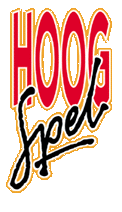 W
WHoog Spel was the first video games magazine in the Netherlands. The magazine was published by Rangeela B.V. between 1990 and 2000. The publisher of the magazine was Harry d’Emme.
 W
WJoker was a Slovenian monthly magazine based in Ljubljana. Started as a computer gaming magazine, it has expanded into reviewing books, movies, educational articles of a general nature and much more. Known for having an interesting writing style which also includes archaic and neologistic Slovene words.
 W
WMega Drive Advanced Gaming was a magazine that focused on the Sega Mega Drive video game console, but would also cover the Mega-CD and 32X. Launched by Maverick Magazines around the same time as Future's MEGA in August 1992, with issue 1 cover dated as September 1992.
 W
WMega Power was launched following the success of Paragon Publishing's first publication, Sega Pro. Dave Perry along with a small editorial team helped the magazine become the first console publication to include a cover CD. The magazine was in circulation between August 1993 and July 1995.
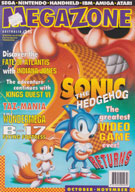 W
WMega Zone was a publication from Elwood, Vic.: Megazone Publications which ran from 1989 to October 1995, ultimately publishing 56 issues. Mega Zone originally started out as a bi-monthly, multi-platform magazine but started publishing monthly and switched its focus to Sega software only in June 1993. Subscribers to the magazine were also given a 20-page insert called SegaZone, which was published on a quarterly basis.
 W
WMegami Magazine is a Japanese monthly magazine which focuses on bishōjo characters from anime and Japanese computer and console games. It is known for having many posters, pinups and large pictures among the articles. Digital Manga Publishing released compilations of what it determined to be the best of the magazine beginning in mid-2007.
 W
WMegaTech was a publication from EMAP aimed specifically at the Sega Mega Drive gaming market. The magazine was started in 1991. The launch editorial consisted of a small team including Paul Glancey (editor) and Mark Patterson. It was published on a monthly basis. In 1993 the magazine was acquired by Maverick Magazines. It ceased publication in 1994 when it was merged into Mega magazine.
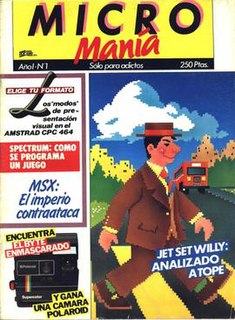 W
WMicromanía is a Spanish computer game magazine. It was founded by the publisher HobbyPress, currently a subsidiary of Axel Springer SE. It was created in May 1985 and is one of the first magazines in Europe exclusively devoted to video games. It was first published soon after MicroHobby, which had been created just a few months earlier by the same publisher. The magazine in its two first periods was a major outlet supporting of the golden era of Spanish software. Micromanía celebrated its 25th anniversary in 2010. In July 2012, Axel Springer sold Micromanía to other owner, focussing its video game coverage in its other magazine, Hobby Consolas. Micromanía team continues the printed magazine independently, published by BlueOcean Publishing.
 W
WMonthly Arcadia was a bi-monthly Japanese arcade game magazine.
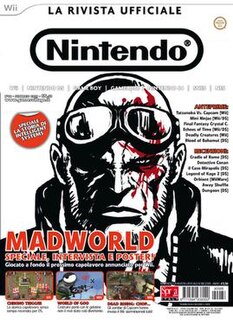 W
WNintendo La Rivista Ufficiale, also known by the acronym NRU, was the Italian edition of Official Nintendo video game magazine, specializing in all Nintendo video game consoles and handheld gaming platforms.
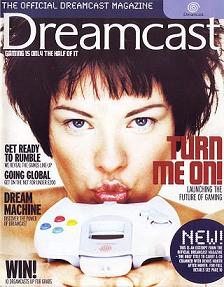 W
WOfficial Dreamcast Magazine was a video game magazine published by Dennis Publishing in the United Kingdom between 1999 and 2001. The magazine held the license for the Sega Dreamcast console in the UK and featured a DreamOn demo disc on almost every cover. The magazine also featured complete games Sega Swirl and Planet Ring on its front cover. The magazine also covered fashion related to Dreamcast gaming but this feature was dropped in later issues. The magazine was published monthly but towards the end of its life issues were sold bimonthly due to not enough content being made available for the demo discs.
 W
WThe Official Dreamcast Magazine was a video game magazine for the Dreamcast published in the United States. The magazine's initial issue "0" was released in June 1999, a full 3 months before the launch of the system. This issue featured Sonic the Hedgehog on a black cover, along with the launch date and some of the system's unique features. The magazine then ran for twelve issues from the September 1999 Dreamcast launch to March/April 2001, shortly after Dreamcast was discontinued. Each issue came with a GD-ROM with demos of Dreamcast games. The final issue did not come with a disc. This was explained as Sega looking for a new way to distribute demos. The cancellation was apparently unexpected as the magazine promised more information about demo distribution in future issues and had a preview for the next issue where Phantasy Star Online was to be reviewed. Many of the staff went on to work for Official Xbox Magazine.
 W
WPC Mania is Bulgarian computer games media originally started as a computer magazine and transformed into on-line game media in the beginning of 2009. It is a prime Bulgarian on-line media source for gaming, Internet, and technology. It was established in 1998 and was the third Bulgarian computer games magazine after the brochure Top Games and the magazines Master Games and Gamers' Workshop. It is the oldest computer games media in the country and is indisputably the most popular media for computer entertainment in Bulgaria, having the biggest circulation and biggest readers span when it was distributed in paper version. The articles concern topics such as personal computer hardware, Internet technologies, computer and console games, news, etc.
 W
WPelaaja ("Gamer") is a Finnish video games magazine published 11 times a year by H-Town. Pelaaja turned 15 years old in 2017. Pelaaja covers both PCs and consoles, although between 2003 and 2007 it focused only on consoles. During that time the PC coverage was in a separate magazine named PCPelaaja, now defunct. Its editor-in-chief was Miika Huttunen, who is the current editor-in-chief of Pelaaja.
 W
WPlay is a monthly magazine produced by Imagine Publishing in the United Kingdom, which reports on Sony's PlayStation product range. It is the UK's longest-running PlayStation magazine. Issue 269, the magazine's final printed edition was published in April 2016, and it has since become a digital only publication. As well as being sold in the UK, PLAY is also sold in Australia. Though because of the distance between the two countries, Australia is one month behind, so some of the information may be inaccurate or old. Prior to issue 249, PLAY came with a covermounted DVD every issue.
 W
WPlayStation Magazine, also known by the acronym PSM, is an Italian video game magazine specializing in all Sony video game consoles and handheld gaming platforms. The magazine features previews, reviews, and cheat codes for Sony games.
 W
WSega Pro was the first publication from Paragon Publishing and catered for the Sega consoles: the Master System, Game Gear and the Mega Drive. Early editorial staff included Dominic Handy (editor), Les Ellis, Dave Perry (designer), Simon Christophers (designer), James Scullion and Damian Butt as staff writers. The magazine existed between 1991 and 1996.
 W
WSega Saturn Magazine was a monthly UK magazine covering the Sega Saturn, a home video game console. It held the official Saturn magazine license for the UK, and as such some issues included a demo CD created by Sega, Sega Flash, which included playable games and game footage. In 1997 the magazine claimed a readership of 30,140. The last issue was Issue 37, November 1998.
 W
WSpectrofon was an electronic magazine for ZX Spectrum produced in Russia by the developer group STEP Interactive from Moscow. The magazine appeared on a monthly basis, and 23 issues were published in total. The issues were stored on a FDD and included both text and program part. There were several "columns" which appeared almost in every issue. Every issue had its own unique custom-written shell, with graphical and music effects. In every issue had as supplement 2-3 games or utilities in full versions.
 W
WST Action was a video game magazine published in the UK during the late 1980s and early 1990s that covered the Atari ST, platform. Some news coverage was also given to the Atari Lynx and Jaguar in the later stages of its life.
 W
WStrana Igr was a Russian magazine focused on video games. It was published by Gameland between January 1996 and November 2013 when the magazine was suspended due to financial problems.
 W
WTilt was a French magazine which began publication in September 1982, focused on computer and console gaming. It was the first French magazine specifically devoted to video games. The headquarters of the magazine was in Paris.
 W
WYour 64 was a British computer magazine aimed at users of the Commodore 64 and VIC-20 home computers, launched by Sportscene Specialist Press in 1984 as a sister title to Your Spectrum. Initially a bi-monthly release it later changed to monthly. The content of issues were balanced between serious and leisure features. The title lasted 14 issues until it was incorporated into Your Commodore.